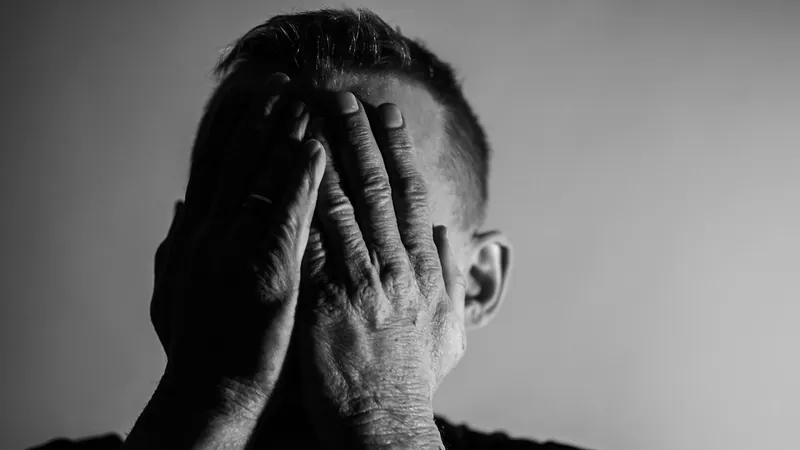Ohio, has the Highest Rate of Mental Illness in the Entire USA
Mental illness is a prevalent issue that affects millions of individuals across the United States. While efforts to address mental health concerns have gained momentum in recent years, there are still significant disparities in access to care and treatment across the country. Ohio, in particular, faces a unique challenge as it has the highest rate of mental illness in the United States. This article delves into the factors contributing to Ohio’s mental health crisis and explores potential solutions to improve the lives of those affected.
Understanding the Scope of Ohio’s Mental Health Crisis
Ohio’s mental health crisis is evident in various statistics. According to the Substance Abuse and Mental Health Services Administration (SAMHSA), Ohio has the highest rate of adult mental illness in the nation, with 22.2% of adults experiencing a mental illness in the past year. This translates to approximately 2.5 million Ohioans struggling with mental health conditions.
The consequences of Ohio’s mental health crisis are far-reaching. Individuals with mental illness are more likely to experience unemployment, homelessness, and involvement in the criminal justice system. They also face a higher risk of suicide, with Ohio having the third-highest suicide rate in the country.
| State | Mental Illness Rate | Suicide Rate |
|---|---|---|
| Ohio | 22.2 | 24.1 |
| California | 18.5 | 18.9 |
| Texas | 17.8 | 14.9 |
| Florida | 16.9 | 18.6 |
| New York | 16.7 | 14.5 |
Factors Contributing to Ohio’s Mental Health Crisis
Several factors contribute to Ohio’s mental health crisis. One significant factor is the state’s history of cuts to mental health services. In recent decades, Ohio has faced budget constraints that have led to reductions in funding for mental health programs. These cuts have resulted in a shortage of mental health professionals and limited access to care, particularly in underserved communities.
Another factor contributing to Ohio’s mental health crisis is the state’s high rates of poverty and substance abuse. Poverty has been linked to increased mental health risks, and Ohio has a high poverty rate compared to the national average. Additionally, Ohio has a significant substance abuse problem, with high rates of opioid addiction. Substance abuse often co-occurs with mental illness, making it more difficult to treat both conditions effectively.
Addressing Ohio’s Mental Health Crisis: Potential Solutions
Addressing Ohio’s mental health crisis requires a multi-pronged approach that encompasses prevention, early intervention, and treatment. One crucial step is to increase funding for mental health services. This would allow for the expansion of mental health programs, recruitment of more mental health professionals, and improved access to care.
Another important strategy is to focus on prevention efforts. This includes providing mental health education and support in schools and communities, promoting healthy coping mechanisms, and addressing the underlying causes of mental illness, such as poverty and trauma.
Early intervention is also essential for preventing the progression of mental illness and improving long-term outcomes. This involves identifying and providing support to individuals at risk of developing mental health conditions, such as children and adolescents.
For individuals already experiencing mental illness, access to effective treatment is paramount. This includes a range of services, such as therapy, medication, and peer support groups. It is also important to address the stigma associated with mental illness, which can prevent individuals from seeking help.
Conclusion
Ohio’s mental health crisis is a complex issue that demands a comprehensive and sustained response. By increasing funding for mental health services, implementing prevention and early intervention programs, ensuring access to effective treatment, and addressing the stigma associated with mental illness, Ohio can work towards creating a healthier and more supportive environment for all.
FAQ’s
Q: What is the mental illness rate in Ohio?
A: Ohio has the highest rate of mental illness in the United States, with 22.2% of adults experiencing a mental illness in the past year.
Q: What is the suicide rate in Ohio?
A: Ohio has the third-highest suicide rate in the United States, with 24.1 suicides per 100,000 people.
Q: What are some of the factors contributing to Ohio’s mental health crisis?
A: There are several factors contributing to Ohio’s mental health crisis, including:
- Cuts to mental health services
- High rates of poverty
- High rates of substance abuse
- Stigma associated with mental illness
Q: What are some potential solutions to address Ohio’s mental health crisis?
A: Some potential solutions to address Ohio’s mental health crisis include:
- Increase funding for mental health services
- Implement prevention and early intervention programs
- Ensure access to effective treatment
- Address the stigma associated with mental illness
Q: What are some resources available to help people with mental illness in Ohio?
A: There are many resources available to help people with mental illness in Ohio, including:
- The Ohio Department of Mental Health and Addiction Services
- The National Alliance on Mental Illness (NAMI) Ohio
- The Mental Health America of Ohio







